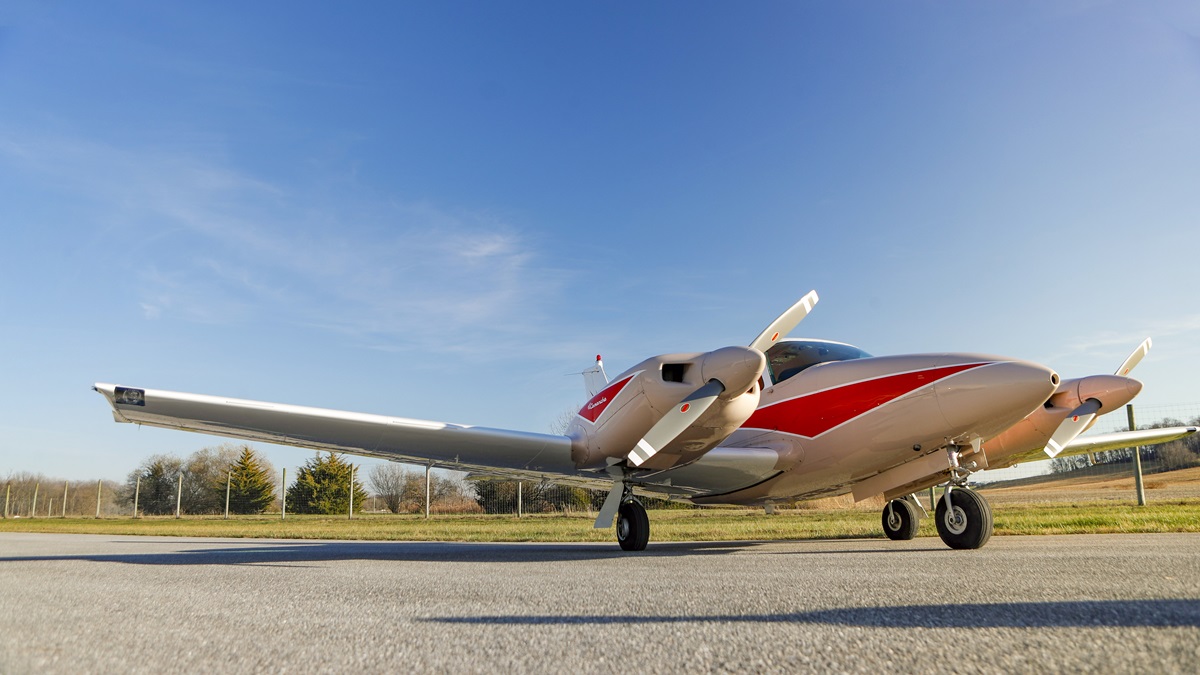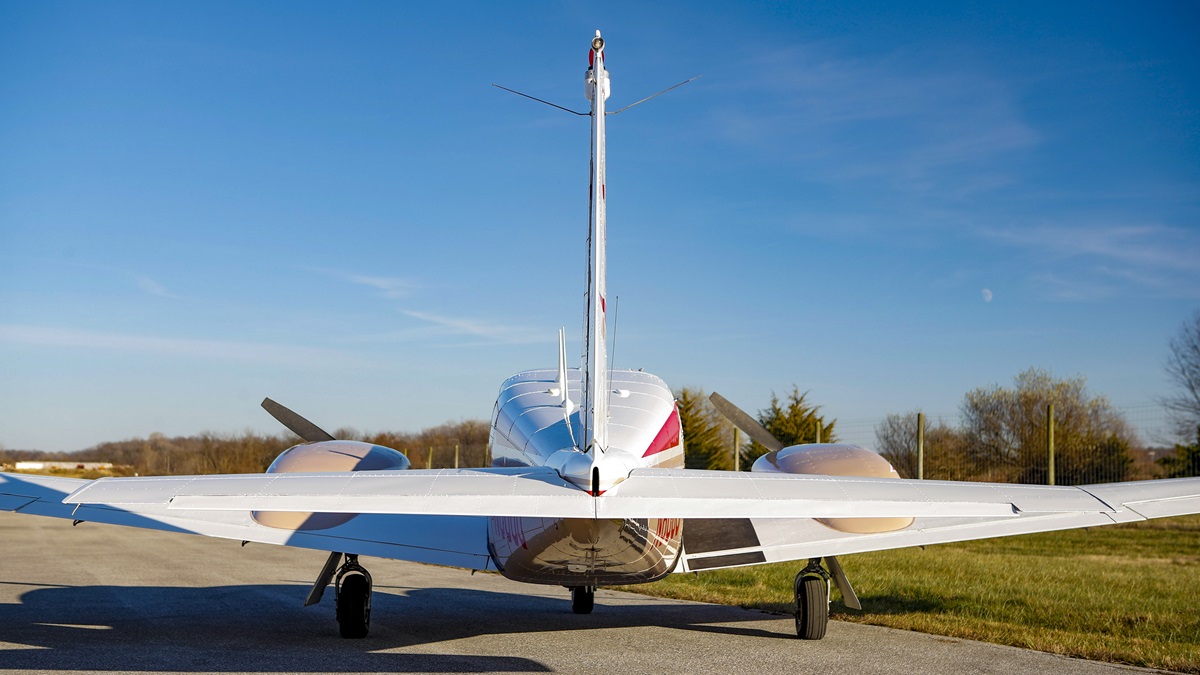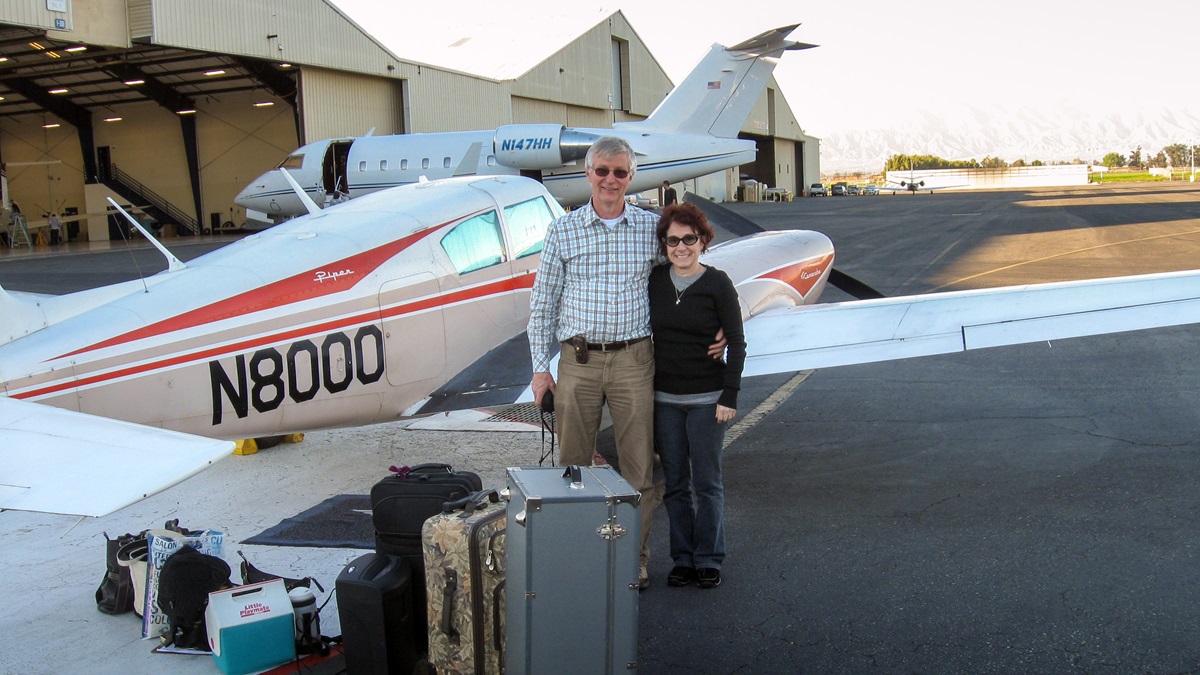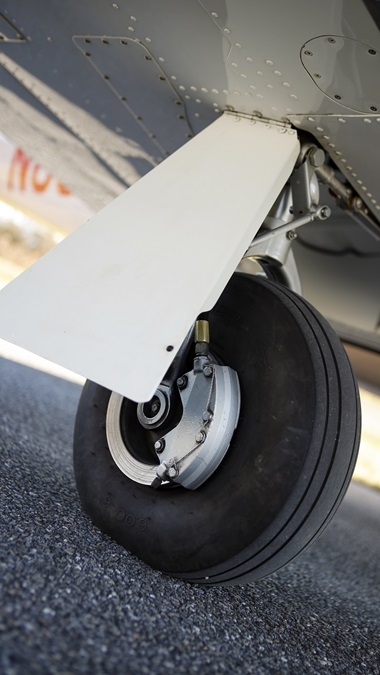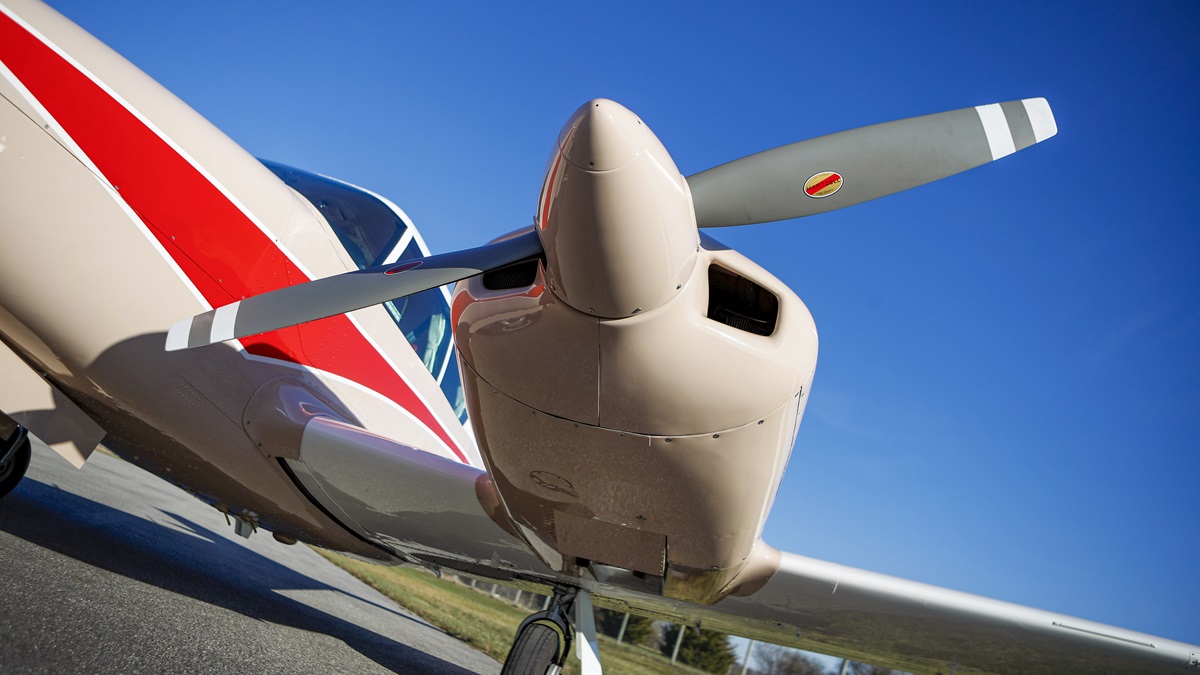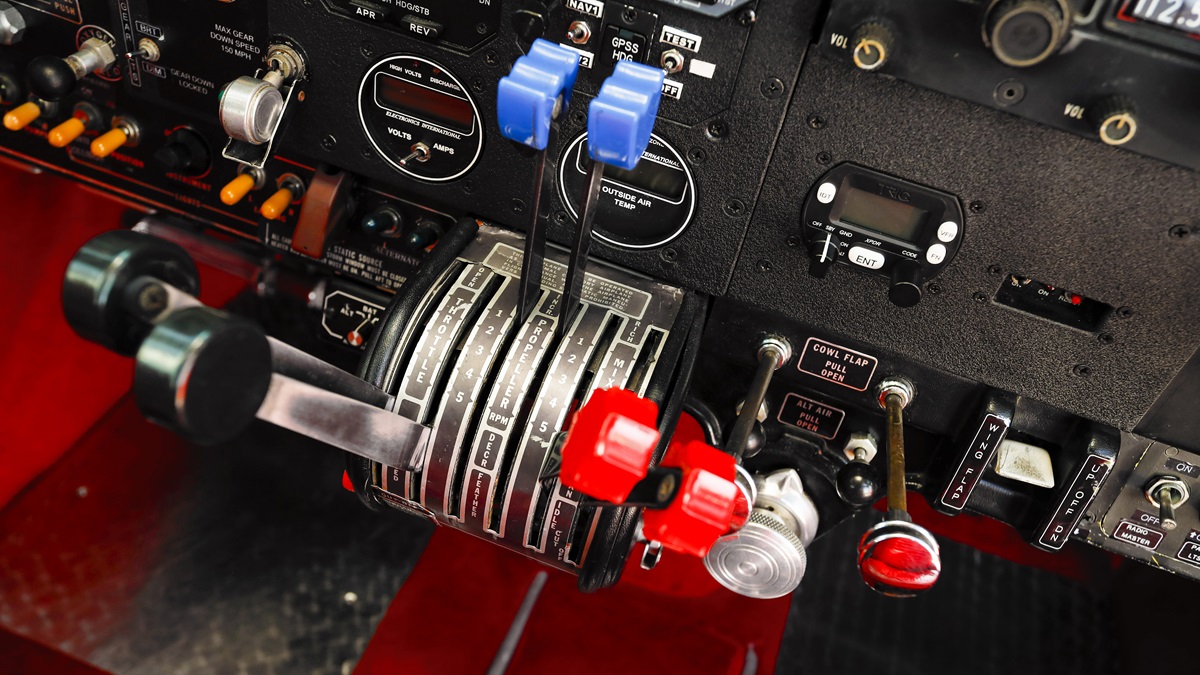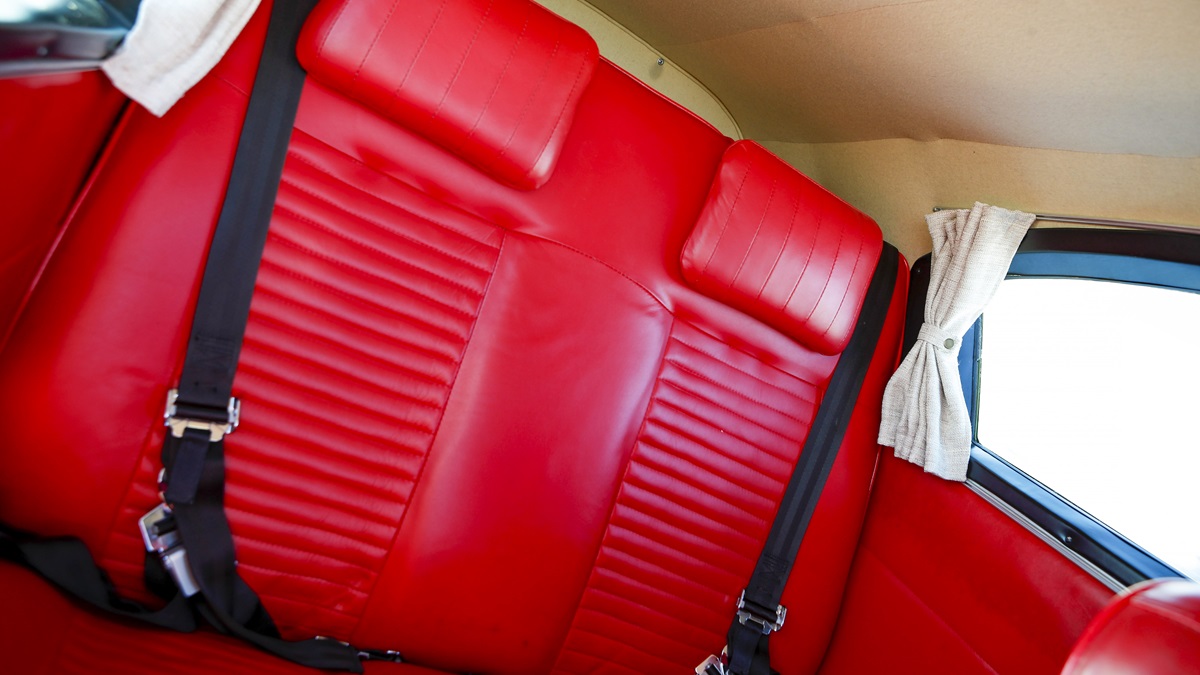Old friends
A pilot and his Twin Comanche return to the sky
By Chris Burns
At the appointed hour on May 17, 2019, I sat in a hangar in Carlisle, Pennsylvania, waiting for my instructor and feeling a bit like a schoolboy on the first day of school. Seven and a half years had passed since my last flight. In preparation, I had been reading the Aeronautical Information Manual, federal aviation regulations, and various other manuals.
Twenty-one miles away in Thomasville, Pennsylvania, N8000, the Piper Twin Comanche I have owned for 29 years, awaited its own return to flight. The term of its nonflying mirrored my own. Coming out of disassembled storage, it waited for an annual inspection and its pilot.
My instructor that day was Barbara George of Cumberland Valley Aviation. Spying me as she and her student returned, walking through the open hangar doors, she gave me a clipboard and keys, and told me where to find the Cherokee we would be using; told me to go preflight; and gave me instructions where to find engine oil and how much to add if any should be needed. George would prove to be energetic, professional, and willing to challenge an experienced but lapsed pilot.
I found the Cherokee, retrieved the checklist from the pilot’s sidewall pocket, and did the walk-around, item by item. It had been 13 years since I had flown a single and probably twice as long since I had flown a Cherokee. Because of this, all the checklists that day would be done as a “read and do” process. I longed for the smoother “do and review” panel flows from my airline days—appropriate when the same airplane is flown frequently. In the Cherokee, I read “fuel selector,” located it, studied, and confirmed its selection before responding “set to fullest tank.” It was like using a map to get around a city one had known perfectly in an earlier phase of life—necessary but awkward.
The actual flying felt more natural than doing the checklists. George and I got airborne, went out to the practice area, and did steep turns, a stall series, turns about a point—all the things you would expect to get reacquainted with flying. The Cherokee billowed on thermals and settled in their absence. Two degrees of pitch change at 100 knots would neither check a billowing rise nor save a sinker. I adjusted. George asked me to redo one of the stalls, but I had not forgotten how to fly. Everything came together with a bit of effort. Finally, we came back to the pattern and did three landings without terrifying either occupant. Decoded, this means that we landed under control in the touchdown zone, contacting Mother Earth—if not with a gratifying kiss, then not with a bone-shattering bang either.
Would I make the same decision if I had it to do over again? I do not know.
n a critical light, however, none of my landing patterns or approaches in the Cherokee were the same. One pattern was wider than the other. This descent angle was shallower than the last. Power had to be added or subtracted in greater amounts than I would have liked. The ideal approach follows the same pattern width, same turn to base, same airspeed, same descent angle, and same flare. Every approach is formed in the longing for an ideal. Of course, no two approaches are ever really the same, but proficiency narrows the band of variation, and, in the process, creates an almost unthinking response to bring things back toward the ideal. The band was a little wider than I would have wished, but the sky had reopened for the ongoing challenge of self-improvement.
I enjoyed flying the Cherokee. The experience was fresh and invigorating. An identity had been reactivated—pilot—one that stretches back to a first solo in 1969, a flying career, and a lifetime of GA travel that rarely saw more than a week between flights. George and I flew together again a few days later to complete an instrument proficiency check. My next flight would be the solo test flight of N8000.
The story of N8000’s life in exile, and the turns and twists in its eventual return, is an odyssey beyond telling in this article. However, understanding why a pilot would take a perfectly good airplane apart, store it, and put it back together hinges on a single fact: For 20 years, the twin had served as transport for our family. It carried us on annual treks to the Bahamas, and to many other special vacations; took two children back and forth to college; and had been the means to attend graduations, weddings, births, and much more. In its use, it garnered all the affection that any aircraft could possibly engender in a pilot. The choice to take N8000 apart at the end of 2011 was, in this light, a natural response to circumstances.
The year 2011 had begun with optimism. In February, my wife and I flew to the West Coast and back. It was a magical trip—our first coast to coast by light airplane. Arriving in Los Angeles, we attended the baby shower for the arrival of our first granddaughter. And, other than having to dig the Twin Comanche out of a foot of overnight snow in Missouri on the way out, we enjoyed incredible weather in both directions. Notably, however, in the wake of the financial crisis, the skies and FBOs along the way still had an ominous absence of GA activity.
Here in the middle of the coronavirus pandemic, I recall an inconvenient and inescapable truth: Like our aircraft, general aviation has its own orographic response—rising on good economic news and faltering on the bad. Pilots and aircraft owners make decisions based on economic influences.
By the summer of 2011, six years into early retirement from the airline, I too felt the downdraft. The economy was tepid; Congress deadlocked on the budget, and Standard & Poor’s for the first time lowered its rating on U.S. government debt. Several factors pushed the unusual decision: Among general aviation aircraft, the Twin Comanche occupies a unique place in operating cost, performance, and purchase price. It also fit our family needs and my own experience like no other aircraft. But why not sell and buy another when time and circumstance permitted? Of the 2,154 examples that Piper built from 1963 to 1972, perhaps half remain in service and of these, only some have received exceptional care and use. But even among these, one buys a half-century collection of unseen experiences that hide under the veneer of paint, interior, and equipment. The older airplane only reveals itself over time. I knew N8000 intimately and knew that no expense had been spared in its upkeep. Did the decision make sense in retrospect? Would I make the same decision if I had it to do over again? I do not know. Financially, expense was not saved—only deferred. The challenge, however, was tremendously satisfying.
So, in November, I flew most of the fuel out of N8000, drained the rest, and began its disassembly. Constructing apparatus to move and store the disassembled twin would take more than a year. Then, disassembled, cradled, boxed, and preserved, the Twin Comanche came home where it would be stored in the barn to await a brighter day.
The restoration of N8000 began slowly in the spring of 2016 with an improved financial outlook. N8000 would undergo substantial repairs, alterations, and improvements during its downtime. Refinishing was the final step. In the spring of 2018, I trailered N8000 the 170 miles to Tunkhannock, Pennsylvania, (76N) where Will Griggs of Griggs Aircraft Refinishing applied the beautiful new finish in the original 1965 design. Trailered back to York Airport, reassembly began in August, and would consume 10 months of everyday labor. In May 2019, N8000 was ready.
There were delays. The shop at the York Airport was flooded with work. The runway was closed for resurfacing. An electric fuel pump began leaking just as the aircraft entered annual. I waited for both pumps to be overhauled. Finally, I flew N8000 on July 12, 2019. It flew beautifully (better than ever, it seemed). In the days that followed, the Twin Comanche was put through its paces, its pilot getting more comfortable with an old friend.
There was still ADS-B to comply with, an electronic flight instrument system to install, and IFR recertification before N8000 could travel. Avionics shops were swamped with ADS-B-related work. It would be January 2020 before N8000 would be IFR ready.
My wife and I flew N8000 to visit friends and made several other short trips in January and February, then made plans for a week in the Bahamas at the end of March. Our son and two friends booked airline travel from L.A. to join us. Customs decal renewed, aging life preservers and locator beacon replaced, N8000 was ready. Seven days before departure, the Bahamas closed its borders because of the pandemic—a tremendous disappointment.
The Twin Comanche is still not back in its role as family transport. Dreams of new and old destinations are still on hold. Long absence, however, gave me something that decades of continuous experience could not: a fuller appreciation for the special gift of seeing the world from the air. Even COVID flying is good flying.
Chris Burns is a retired airline captain with more than 18,000 flight hours.
